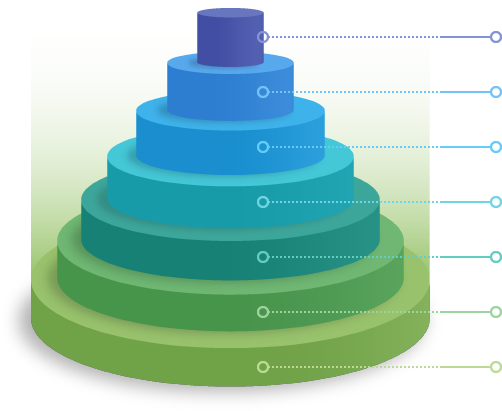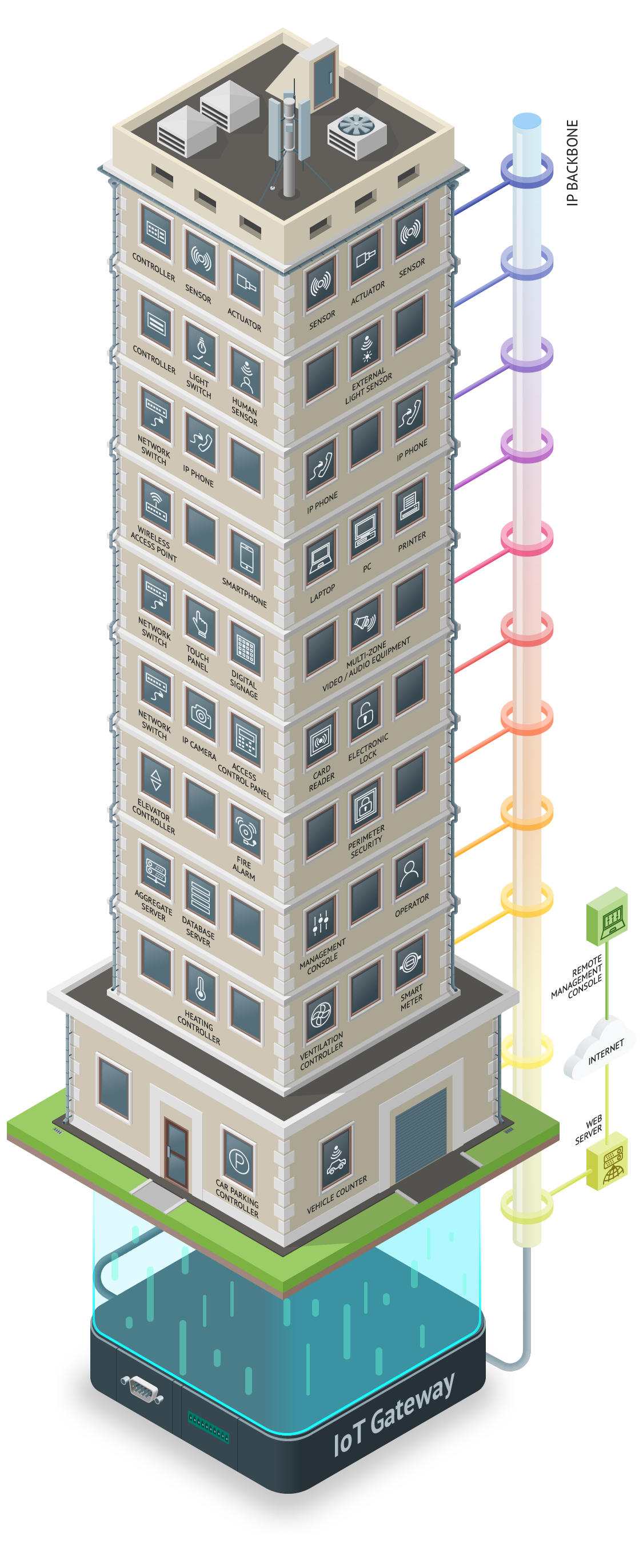
The primary audience of this article is System Integrators (SI), but we also believe consulting companies and even customers to enjoy reading it. The Internet of Things (IoT) brings plenty of opportunities for SI. The topic is hot, and customers are keen to harvest value from smart connected devices, digital twins, and IoT-enabled business processes.
Why Read This Article
System Integrators
You are those who design, build and deploy IoT solutions for customers. Your business depends on your ability to deliver a successful project, make the customer happy to get another project or a new customer.
For the IoT line of business, the platform choice is the cornerstone for success. It defines how profitable your projects are, how fast you can do them, and what kinds of IoT solutions you can deliver.
Most times, a high technical skill level teases a System Integrator to consider building its own IoT platform that “ticks all technical requirement boxes” for customers. Please refer to a special section “Build vs. Buy” for the pros and cons on this dilemma.
For those of you who want to build a strong partnership with one of IoT platform vendors, in this article we hand-picked essential business, technical and partnership aspects of the IoT platform selection process.
Consulting Companies
Consulting companies advising customers on strategic decisions need to read this article to keep an eye on essential aspects of the IoT platform offerings available on the market.
Your reputation as a thought leader depends on the level of understanding of solutions and technologies that bring value to your customers.
This article aids your deep dive into IoT platforms capabilities as the foundation of such solutions.
Customers
Customers are end users of IoT solutions built on top of the IoT platform. By reading this article, you can benefit from our analysis of many IoT project requirements and solution implementations.
Not all IoT platforms are the same even if they call themselves platforms. For you, we have distilled essential capabilities which distinguish an exciting IoT journey from a painful experience.
There is a particular group of customers who can interact with the IoT platform vendor as a partner rather than as a client. Telecommunication companies and managed service providers (MSPs) usually wish to build their own IoT services on top of their broad connectivity capabilities and private cloud investments. If you are one of the telecommunication providers or MSPs, the article helps you see the IoT platform from the SI perspective. Your teams will play integrator’s role while creating IoT products for your industrial or individual services consumers.
What Is the IoT Platform
In its essence, each IoT platform provides several types of services usually organized in layers:

- Connectivity Services
Getting data from devices or external
data sources - Device Management Services
Bi-directional interactions with devices
and device management tasks - Data Storage Services
Storing massive amounts of IoT data
- Data Processing Services
Accessing data, generating actions
and producing insights - Visualisation Services
Reporting and presenting complex IoT data
in a visually appealing and digestible form - Integration Services
Making IoT data a part of the enterprise
business automation processes - Security Services
Acting across all the services above to ensure
data protection and access control
The enterprise-grade IoT solutions also require:
- High-availability (failover) capabilities
- Flexible deployment options (any combination of on-premise, private and public cloud deployments)
The core services set is general and often creates confusion. From a formal viewpoint, can one call an IoT platform a Web interface designer with a Cloud database backend and MQTT protocol support?
Some may say “Yes” as long as:
- It can connect devices via MQTT
- It can do simple interactions with devices
- It can store IoT data in the Cloud database
- It can manipulate data via SQL or other database provided method
- It can design dashboards and reports
- It can integrate with external systems via the same SQL or data access method
- Security is provided by protected data connection and database capabilities
It’s not a surprise that in 2018 there were over 450 self-described IoT platforms available on the market. Obviously, not all platforms are the same even if they have necessary service capabilities.
In many cases the equipment vendor who provides connected devices to the enterprise promotes its device management solution as an IoT platform.
Let’s have a look at how such a vertical solution positioned as a platform fits into a broader digital transformation strategy for the enterprise.
Why Does an Enterprise Need a Cross-Device IoT Platform
As digital transformation creates for an enterprise entirely new opportunities that never existed previously, IoT-enabled business processes often create extra value when synergy occurs.
A simple example illustrates this.

Smart Building Use Case
A building operator can install smart HVAC system with its own IoT solution provided by the HVAC vendor. Now an operator can monitor and manage all connected devices from one management console.
Another vendor provides the physical access control system with its own IoT solution. Again, everything related to card readers and presence monitoring is under control by the vertical IoT solution.
The challenge occurs when the operator wants to cut the energy consumption bill further and introduce HVAC usage optimization project based on physical presence information.
One could say a simple point-to-point integration would work in this case. However, a modern facility has many subsystems that can work together to make the building “smart.” This situation is where an IoT platform becomes the solution.
Instead of ordering separate subsystems modifications or point-to-point integration, the building operator can implement an IoT complex monitoring solution on top of a platform to let all subsystems exchange data and benefit from crossdevice management scenarios governed by the “brainin-the-center.”
The IoT platform lets an enterprise feel confident that any new IoT-related initiatives work together under one umbrella. When new synergy idea pops up, the properly designed IoT platform helps to implement it quickly and smoothly. As a result, the enterprise enjoys a competitive advantage of capturing new opportunities as they occur with new technologies, equipment or devices.
Why Does the Partner Need an IoT Platform
The core business of a System Integrator is to deliver value for customers with an adequate level of profitability.
We covered the value of an IoT platform for the customer in the previous section. Many companies are happy to hear about significant cost savings, optimized busines processes or competitive advantages provided by IoT. The System Integrator is the one who, as a thought leader, can propose such projects and, as a trusted partner, can ensure successful project delivery.
How can a System Integrator manage the IoT business line profitability while being innovative for its customers? Let’s look at another example.
Complex Data Center Monitoring
The IT infrastructure of a modern enterprise with its own data center (not all of them have moved to Cloud yet) is a complex organization by itself. The System Integrator has to deal with various vendors to make everything work smoothly together.
Is it possible to deliver a complex data center monitoring project by technologies from one vendor? Not that easy. Even with big names with an impressive list of monitoring and management capabilities (coming at a premium cost), the Integrator needs at least two of them: the first solution for monitoring from the ground level of electrical equipment to the level of application servers and the second monitoring solution from the application server level and above.
Therefore, to perform sophisticated data center monitoring the customer needs to look at two different interfaces and work with two different management systems. Is it possible for a System Integrator to offer a single pane of glass monitoring solution for the customer? The answer is “Yes”, with the help of an IoT platform acting as an umbrella for all kinds of monitoring and management tasks. Aduly designed IoT platform provides all required connectivity, monitoring, and management capabilities to enjoy IT infrastructure monitoring without limits.
What about the SI profitability? Investments into a good IoT platform education pay off by your ability to reach customers with various HW and SW vendors, different devices, equipment and applications. As long as those devices and applications speak standard or documented protocols, the System Integrator can deliver a high-quality IoT solution on top of the platform it knows well.
A partnership with an IoT platform vendor becomes a source of competitive advantage that allows the System Integrator to address various IoT scenarios with the same set of skills. However, a partnership with a vendor is not the only way to get an IoT platform. What about in-house development alternative?
Build vs. Buy
System Integrators and their customers always have choices when adopting IoT technologies. Could it be better to design, develop, test and support its own IoT platform or to buy this platform from a vendor?
Here are some reasons to build the IoT platform or to buy one.
|
Reasons to build
|
Reasons to buy
|
|
• A small number of device types |
• Many device types or thousands of similar devices |
|
• Extensive internal development resources |
• Limited in-house expertise in complex software systems development |
|
• Readiness for continuous platform support costs |
• Time-to-market for IoT solution is critical |
|
• Long-term strategy to become an IoT services provider with the own IoT platform as a source of competitive advantage |
• Long-term strategy to become an IoT services provider based on externally supported IoT platform |
|
• Willingness to invest in everlasting industrial protocols and regulatory requirements support |
• Plan to start small and scale IoT solution over time |
|
• Unique IoT use case not covered by available IoT platforms |
You have already noticed references to a “properly designed IoT platform” in this article. Let’s explore what this means from our perspective. We’ve grouped critical IoT platform vendor evaluation criteria into three categories: vendor business model, platform technical capabilities and vendor partnership program.
Platform Vendor Business Evaluation
References and Experience
References and experience are the key indicators you are not dealing with “hobby-as-a-business” IoT platform. The company should have at least 7-8 years of experience with its platform implementations delivered by partners.
Keep attention to the references provided by the vendor. Unless you plan to work with companies from one industry, try to avoid “platforms” focused only on one vertical market.
Ideally, the list of references should be a mix of industries and use cases. For instance, for industrial enterprises the list can contain IT monitoring and management, equipment monitoring and management, IoT analytical projects, cross-device and cross-enterprise use cases.
Always pay attention to examples of niche vertical solution replacements. Usually, it’s a good indication that a vertical solution built on top of the IoT platform can compete with a niche vendor’s functionality. It helps you get the first project implemented fast while keeping the door open for any synergy scenarios.
Be careful if the vendor claims only a couple of references, even if it’s about big names. It may be a sign that the vendor team heavily customized the platform for those projects. Many big projects on top of the platform, on the contrary, is usually a great sign.
IoT Platform Focus
The vendor that has the IoT platform as its core business focuses solely on the strategic platform development.
The list can be long, including new industrial protocols and connectivity standards support, development of drivers for popular proprietary equipment, platform certification by regulatory requirements, new visualization and analytical capabilities development, etc.
Roadmap
Does the IoT platform vendor regularly publish the roadmap or are they ready to share it with you? If you do not know the answer to this question, it’s better to ask before placing your partnership bet on the platform.
Deployment Options
Despite the common industry trend towards public cloud, many enterprises prefer a hybrid model with a combination of on-premise and cloud deployments. For industrial enterprises, the reluctance to move IoT workload to the cloud is often justified by a delay caused by sending device data to the cloud and getting management commands back. For some manufacturing processes, this delay can be too long.
Simply put, the platform you choose should have on-premise deployment option to avoid confusing discussions with customers that are “not yet in the cloud.” Even if Cloud deployment is the customer’s preferable option, do not forget to check if the IoT platform is cloud provider agnostic. The platform should be easily portable between public clouds from leading vendors. Ideally, there should be no dependency on the 3rd party proprietary cloud services.
Please note that if you work with telecommunication providers, your customers most likely already have their cloud. Therefore, the requirement to provide a solution deployable in the private cloud is mandatory. Keep it in mind during the evaluation process.
Platform Technical Evaluation
The initial technical evaluation is easy to do based on the service layer model of an IoT platform outlined earlier.
Connectivity
Even enterprises from the same industry are different, not to mention huge differences between industries. Mature IoT platforms provide an extensive list of supported protocols that cover the vast majority of devices or data sources. Make sure that all key industrial protocols are in the vendor’s “supported protocols” list.
Do not forget to check if the platform vendor can cover an unexpected but not unlikely situation with non-standard protocols or proprietary devices. Ask about SDKs or DDKs available for System Integrators in case custom development by the vendor team is not possible.
Device Management
The device abstraction layer is a hidden gem of any mature IoT platform. How does the platform deliver on its flexibility promise? As the SI, you want to learn the modeling tool once and reuse it for any use cases.
Some questions to ask:
- Is there any data model behind the platform?
- How universal is the model? Can I describe devices of any kind in the model, including their characteristics, provided functions and generated events?
- How long does it take to learn the platform modeling capabilities?
Data Storage
Data storage is another area of potential limitations for IoT application development.
How flexible are you (and your customer) in choosing the data storage technology? Is there only relational database choice or are other data storage methods available?
Data Processing
SQL is the universal language for data manipulation, and SQL skills are available on the market.
Check with the vendor what other skills will your team need to get for working with data stored inside the platform. Assess the gap and efforts required for adding missing skills.
Visualisation
There are many report creation tools available on the market, so the platform vendor will most likely cover this area well.
Look thoroughly through less apparent types of visualization like maps, building plans, network topology, factory floor plans, etc.
If your customers are from an industrial sector and have equipment monitoring requirements, make sure that the platform vendor provides libraries of active images that can change graphical representation depending on the physical object status.
The platform should not limit you in a way you want to visualize IoT information.
Integration
There are several types of IoT platform integration frequently requested by customers. Check with the platform vendor if they support:
- Integration with enterprise systems (MES, ERP, EAM, CRM, etc.): IoT data has much more value if embedded into enterprise business automation processes. Make sure that the vendor has documented APIs for such integrations.
- Integration with enterprise portal: the platform should not limit the customer from using any of its visualizations together with existing portal technologies.
- Integration with real-time operational systems: the platform vendor should provide fast data transfer protocols for situations when reaction time is critical.
Security
On top of the secured data transfer and storage, one aspect of platform security is essential for cross-device and cross-enterprise scenarios: multi-tenancy.
It’s worth checking with the vendor how multi-tenancy and data access control work. Is the platform flexible enough to support functional-based, role-based and geography-based access control policies?
We outlined above the most critical requirements for each of the IoT service layers. Going further we would like to draw your attention to less obvious, but significant platform capabilities, that often create a difference in enterprise implementations.
Platform Development and Diagnostics Tools
The IoT platform itself is the development tool, and its administrative module is an Integrated Developer Environment (IDE). Therefore, it should allow not only application logic development but also provide a full set of debugging capabilities.
Every piece of information produced by the platform should be available for logging, search-enabled and accessible for further deep analytics. Your implementation teams benefit a lot from a detailed analysis of all platform components including pools, cache, message queues, etc.
Scalability
There are two types of scalability important for IoT solution implementations.
First, it’s the ability to build a horizontal cluster with workload balancing capabilities.
Second, it’s multi-layer architecture support. Each layer including edge servers, data collection, data storage, data processing and analytics, application servers and UI servers, should scale independently.
Performance
Pay attention to the amount of computing power used for IoT data processing. Too many processing cores or too much memory required for data collection and manipulation can make your IoT solution unreasonably expensive.
As a rule of thumb, a commodity server with 1 CPU should be able to collect, store and process 100-200K data points. Combined with independent layers scalability, this should allow you to build cost-effective distributed architectures keeping the solution performance high.
DevOps
When your implementation team needs to deliver the project under time pressure, the code transfer capabilities are crucial for developers’ productivity. The platform should allow fast code transfer between Development / Test / Production environments and provide integration with GitHub/SVN.
Check also with the IoT platform vendor if they provide documentation (ideally with best practices) on parallel IoT applications development.
On-premise / Cloud and Edge Code Base Compatibility
Edge Computing is a big deal in the IoT area now. The more data processing and analytics happen close to the device, the less response time the customer has for time-critical applications. Customers also love paying less for transferring fewer amounts of data to the central data store.
Unfortunately, it’s not a rare case when the code for Edge Computing differs from the Platform code. The code incompatibility often happens when the IoT platform vendor tries to catch up with the market trend towards Edge Computing by acquisitions.
The same set of development tools and code portability between Edge and On-premise/Cloud environments is a big time saver for the integrator. Keep your eye on it.
Platform Vendor Partnership Program
A good litmus test for a vendor can be a question about “replacing vertical solution X with your platform capabilities.” Be cautious with the answer “it will take us $X and Y months.” When the IoT platform vendor has a good platform and is serious about making you self-sufficient, a more promising answer is “it will take YOU $X and Y months.”
This section concerns the so-called “ease of doing business” aspects of your cooperation with the IoT platform vendor. Here are the most critical aspects from our viewpoint.
Education Roadmap for Partners
IoT Platform is a complex product with many roles involved in project design and delivery. The education program from the vendor should cover all of them: administrators, implementation engineers, developers, UI developers, data scientists, architects, etc.
Check if the vendor has courses, self-study materials, and labs embracing all aspects of the platform.
Platform Documentation
The same as for education purposes, the Platform documentation should be rolebased, detailed and up-to-date. Upon graduation from vendor’s courses, the quality of documentation defines the number of questions to the vendor’s support line and your IoT solution design speed.
Pricing Policy
Pricing policy stability is critical for projects of customers with long sales cycles and vital for OEM partnerships.
Make sure that the policy is understandable. For long-term strategic relationships, it’s also important to be clear about annual price harmonizations. Transparent pricing allows you budget projects properly.
Partner Risk Mitigation
When you, as System Integrator, work with big enterprises, it’s critical to have welldefined risk mitigation mechanisms backed by your partners.
Provided the Platform vendor stays in business for years to come, there are no risks involved.
What happens if it’s not the case? Is vendor open to provide you with the platform source code in case of its financial or technological difficulties?
Final Thoughts
The IoT can be the next Big Thing for many System Integrators, and the partner choice determines a long-term success to a large extent.
While an idea to build a simple IoT platform can be a reasonable option for an enterprise with one IoT application only, it’s not usually the case for a System Integrator. Because of the complexity and time required for a complex IoT platform creation, most of System Integrators prefer to partner with one of IoT vendors.
As long as the IoT Platforms market matures, only strong vendors survive.
We hope that this article will help you choose the reliable vendor by evaluating it from business, technical and partnership perspectives that sometimes get overlooked.
 |
Sergei Likharev - Business Development Leader for Europe, Tibbo Systems |
If you have any questions on this article or want to get more information, he can be reached out on sergei.likharev@tibbo.com or @SLikharev.
Also, check out our website.
You are welcome to download the article in pdf and share IoT platform selection guide in your social media: